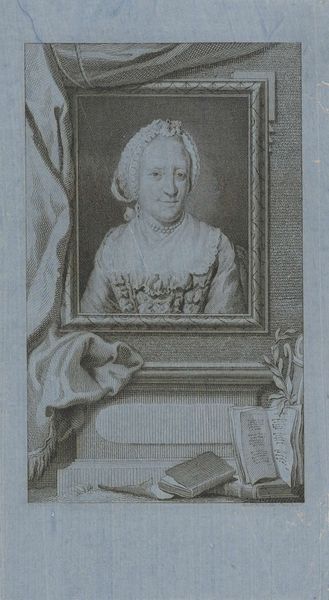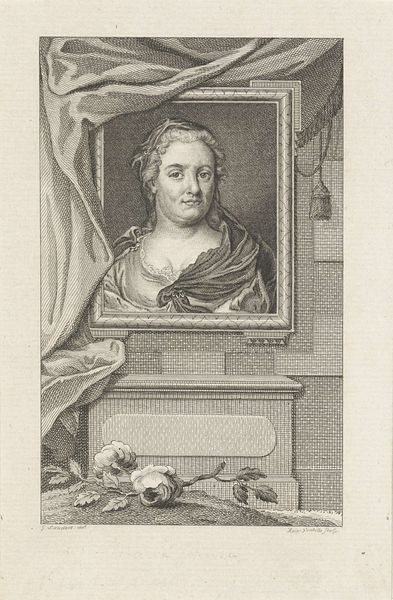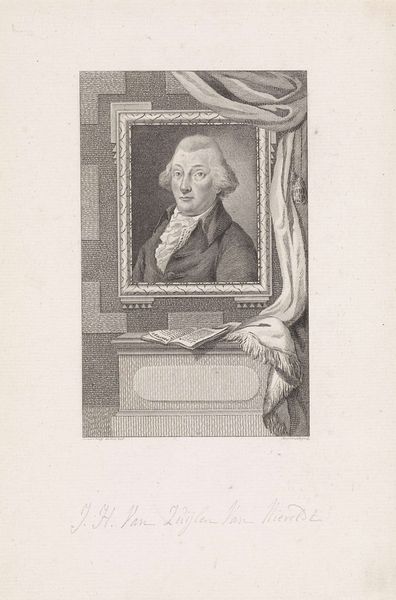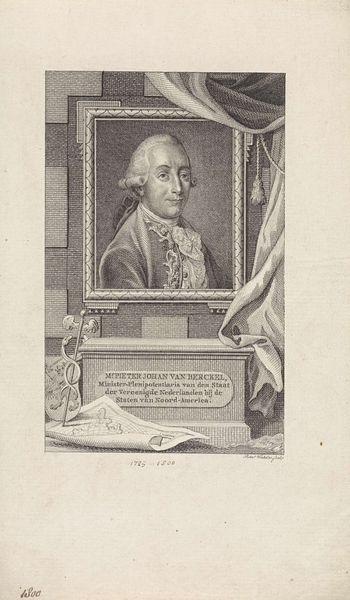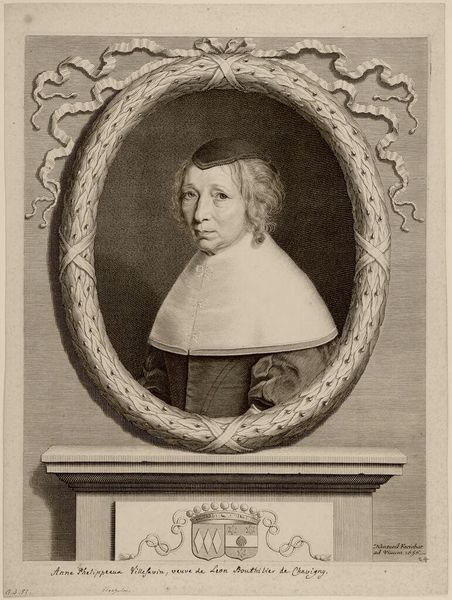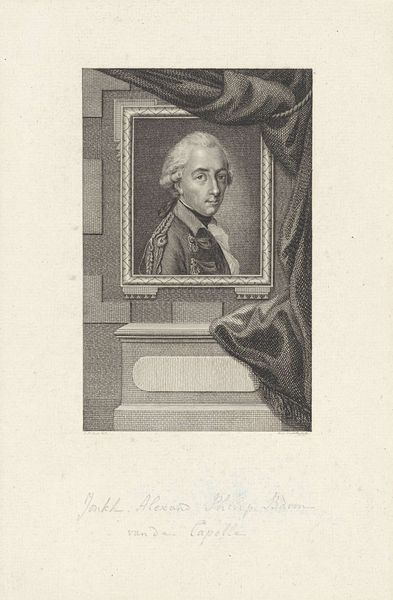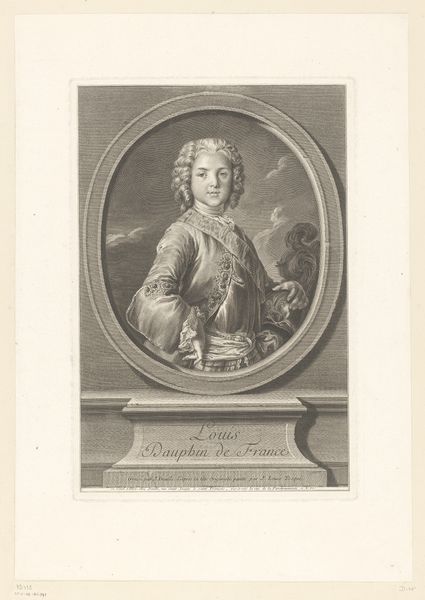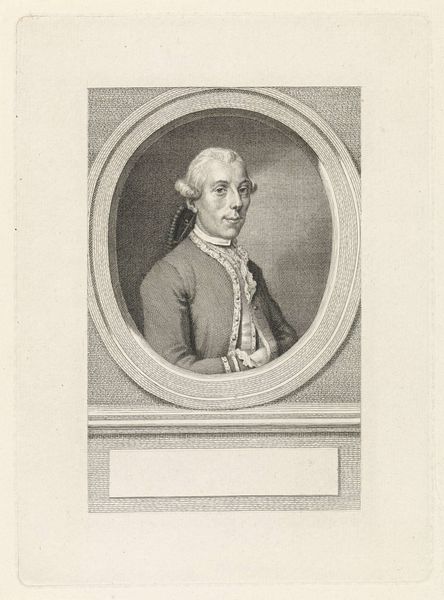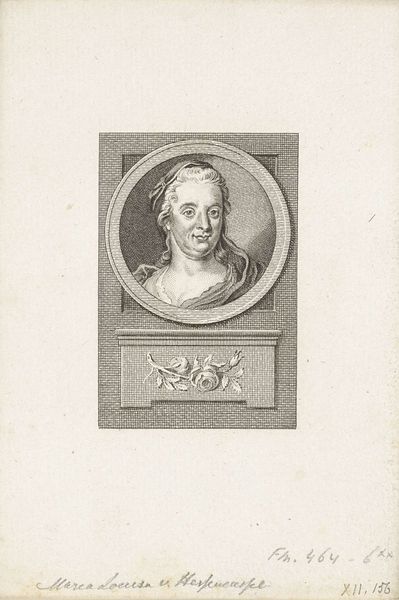
drawing, engraving
#
portrait
#
drawing
#
neoclacissism
#
engraving
Dimensions: height 241 mm, width 158 mm
Copyright: Rijks Museum: Open Domain
Curator: This engraving by Reinier Vinkeles, completed in 1799, is titled "Portret van Lucretia Wilhelmina van Merken" and is now held in the Rijksmuseum's collection. The detail is extraordinary, but I’m also struck by the quiet confidence in her gaze. Editor: Immediately, the precision of the line work strikes me; you can practically feel the texture of the paper. It feels like such an intimate portrait, even rendered through engraving. It makes me think of how many hands this would have passed through in production. Curator: That texture you're sensing is quite interesting in the context of neo-classicism, which highly valued order, balance and clarity. Even in portraiture, these are values often promoted by showing status through dress and refined expression. Van Merken here appears wise, intellectual. Note the open book. The sprig of laurel at her shoulder indicates honor. Editor: Yes, though consider the context of engraving; it was about reproducibility. While honouring Van Merken's individual likeness, Vinkeles was producing multiples of her image for broader consumption, making her likeness into a commodity. Curator: And this very reproduction itself allows us, today, to continue to perceive layers of meaning. Even the drape of the fabric seems symbolic; partly concealing, partly revealing what's underneath. What messages are being framed or communicated in plain sight? Editor: Exactly! The drape's positioning, along with those carefully positioned books and even the framing of the portrait itself: those aren't naturally occuring; that arrangement is labor, deliberate arrangement for an image. I wonder what sort of market demand was driving this imagery at this time. Curator: It reminds us that portraiture of this era functioned less as a mirror and more as a carefully constructed stage upon which identities were negotiated and perpetuated. An opportunity for lasting visual communication of self and values. Editor: Well, by looking at the labour, material, and even commerce involved we get closer to grasping who she was. Curator: Indeed. Layers of meaning created through material conditions. The engraving offers so many symbolic paths to understanding both the sitter and the era that shaped her representation.
Comments
No comments
Be the first to comment and join the conversation on the ultimate creative platform.

